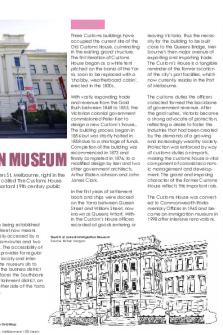Extras- The Warren Anatomical Museum PDF

| Title | Extras- The Warren Anatomical Museum |
|---|---|
| Author | Elisha Galambos |
| Course | Neuroscience |
| Institution | Harvard University |
| Pages | 1 |
| File Size | 45.6 KB |
| File Type | |
| Total Downloads | 96 |
| Total Views | 135 |
Summary
Notes from the additional lesson videos....
Description
The Warren Anatomical Museum ➢ Medicine’s most famous neurological cases, [Phineas Gage] ➢ Foreman of a crew of railroad worker, Vermont, 1848 ➢ Blasting rock, tamping iron through the left side of his face, through his eye, straight to the top of his skull ➢ Tamping iron, top of his head, took portion of his frontal lobe ➢ Survived the incident ➢ Sterilized medical gloves were not invented until 1890, doctors used fingers, suffered from infection ➢ Gage was in a coma, woke up and pulled through ➢ Frontal Lobe is much larger in humans than animals, including apes and monkeys ➢ Most credible accounts of injury from the Gage’s doctor (John Harlow) ➢ Gage had altered behaviour, less capable and less temperate ➢ Early evidence that the frontal lobe plays a role in governing human behaviour ➢ Gage continued to work successfully after his injury ➢ Somwhat diminished- highly functional ➢ Brain is a resilient organ, able to sustain damage and still function ➢ Great plasticity of the brain, even after serious injury ➢ Skeleton was disinterred, took skull and tampering iron ➢ 1850, Henry James Bigelow, wants to substantiate injury, invites Gage to Harvard Campus ➢ Gage donated bar to Warren Anatomical Museum ➢ Gage comes back for bar, 1854, uses it when touring medical schools ➢ Gage has the bar his whole life ➢ Phrenology Casts are from the Collection of the Boston Phrenology Society ➢ Phrenology was a pseudoscience that measured skulls and inferred personality traits ➢ Popularity in the 19th century, influenced criminology, education, psychiatry, literature and art ➢ Claimed the surface shape of the skull told of fixed personality traits ➢ Large skulls claimed to be a signifier of greater intelligence ➢ Larger bumps in certain areas were seen as signs of cautiousness, poetic ability or faithfulness ➢ Spurzeheim, categories- diminished intelligence, tune, language, acquisitiveness ➢ Acquisitiveness meaning theft or the propensity to acquire ➢ Symbolical head, numbers that would correspond with examples of tune, language, math, etc ➢ Clearly pseudoscience, Gall and Spurzheim were basing it on neuroanatomy, dissections of the brain....
Similar Free PDFs

THE British Museum - summary
- 3 Pages

examen de horas extras
- 5 Pages

Calculo de Horas Extras
- 4 Pages

Extras 1 - EJERCICIOS PRACTICA
- 23 Pages

Ejercicios Horas Extras
- 6 Pages

Exercicios extras cisalhamento
- 18 Pages

Seguimiento A Horas Extras
- 9 Pages

Horas Extras Calculos 2
- 4 Pages

Sutep Extras Escala-cine2021
- 1 Pages

Anatomical Positions
- 1 Pages

Immigration museum
- 2 Pages

Calico Museum
- 20 Pages

Examen puntos extras
- 3 Pages

Label the anatomical Body and Planes
- 12 Pages
Popular Institutions
- Tinajero National High School - Annex
- Politeknik Caltex Riau
- Yokohama City University
- SGT University
- University of Al-Qadisiyah
- Divine Word College of Vigan
- Techniek College Rotterdam
- Universidade de Santiago
- Universiti Teknologi MARA Cawangan Johor Kampus Pasir Gudang
- Poltekkes Kemenkes Yogyakarta
- Baguio City National High School
- Colegio san marcos
- preparatoria uno
- Centro de Bachillerato Tecnológico Industrial y de Servicios No. 107
- Dalian Maritime University
- Quang Trung Secondary School
- Colegio Tecnológico en Informática
- Corporación Regional de Educación Superior
- Grupo CEDVA
- Dar Al Uloom University
- Centro de Estudios Preuniversitarios de la Universidad Nacional de Ingeniería
- 上智大学
- Aakash International School, Nuna Majara
- San Felipe Neri Catholic School
- Kang Chiao International School - New Taipei City
- Misamis Occidental National High School
- Institución Educativa Escuela Normal Juan Ladrilleros
- Kolehiyo ng Pantukan
- Batanes State College
- Instituto Continental
- Sekolah Menengah Kejuruan Kesehatan Kaltara (Tarakan)
- Colegio de La Inmaculada Concepcion - Cebu

